When you drop a battery-powered device, the impact can open internal contacts for as long as 10ms, producing a momentary loss of power that can cause a false low-battery indicaTIon. (There is sometimes a similar momentary effect on the device's owner, especially if the device is expensive, but that's beyond the scope of this application note).
You can insure continuity of power by adding a large capacitor across the battery. The capacitor must provide a certain amount of voltage headroom as margin against the discharge of load current. The capacitor voltage varies with discharge current as dV = Idt/C, so insufficient headroom calls for an even larger capacitor.
Another problem is that large capacitors tend to be leaky. Capacitor leakage is usually not a problem during normal operation, but during "sleep mode" it can be a substantial fraction of the total quiescent current and can cause a significant reduction in battery life.
The circuit of Figure 1 solves all these problems. Two AA batteries provide 3V power, which is boosted to 3.3V by a stepup dc-dc converter (U3). The large reserve capacitor of 2mF or 4mF is charged from the 3.3V output via a SPST CMOS analog switch (U1). The output of this 175 switch charges the reserve capacitor and drives the input of a low-dropout linear regulator (U2).
switch charges the reserve capacitor and drives the input of a low-dropout linear regulator (U2).
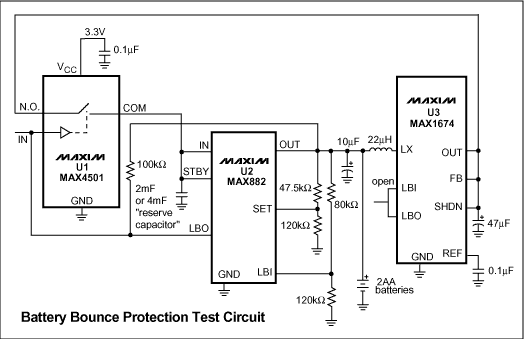
Figure 1. This circuit removes discontinuities in power by backing up the battery (two AA cells) with charge on a reserve capacitor.
U2's output is set to provide 1.68V when the battery is removed. The output is also divided down by the 80k/120k divider to trip an internal comparator connected to the low-battery input (LBI). The comparator's open-drain output (LBO) feeds back to U1's digital input (DIN), which turns the switch on (high) and off (low).
Figures 2-5 show the circuit performance for different values of reserve capacitor and load current. Figures 5-6 remove switch-response time by wiring the switch in the ON position.
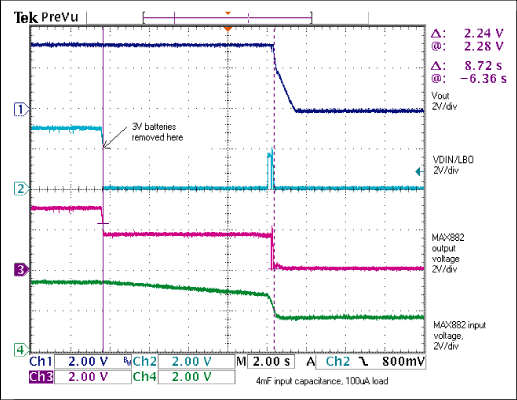
Figure 2. Figure 1 circuit with 4mF reserve capacitor and 100µA load: after removing the battery, power remains for 8.7s.
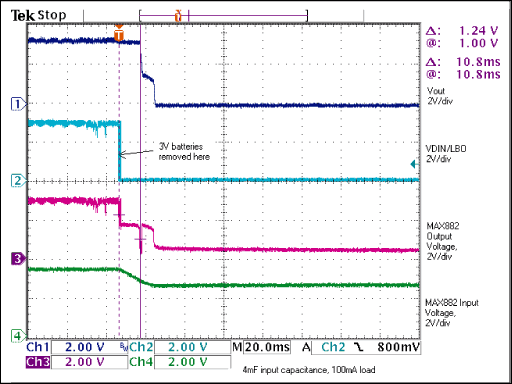
Figure 3. Figure 1 circuit with 4mF reserve capacitor and 100mA load: after removing the battery, power remains for 10.8ms.
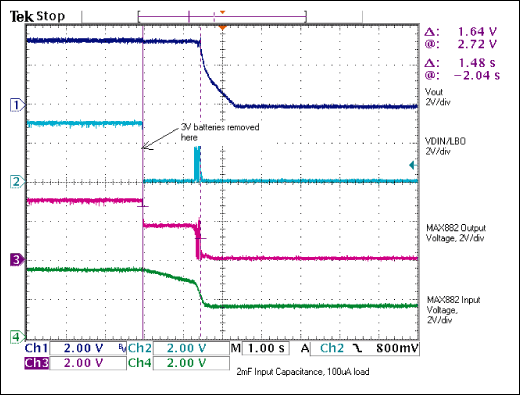
Figure 4. Figure 1 circuit with 2mF reserve capacitor and 100µA load: after removing the battery, power remains for 1.48s.
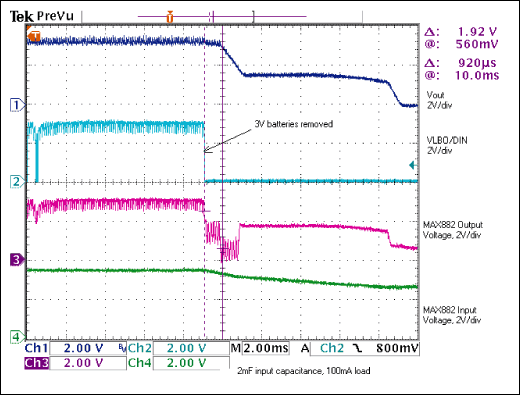
Figure 5. Figure 1 circuit with 2mF reserve capacitor and 100mA load: after removing the battery, power remains for 920µs.
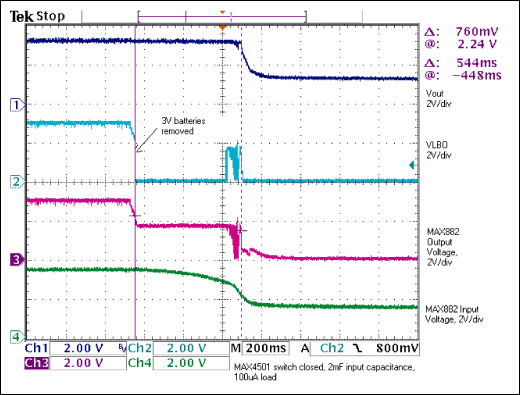
Figure 6. Figure 1 circuit with 2mF reserve capacitor, 100µA load, and switch wired closed: after removing the battery, power remains for 544ms.
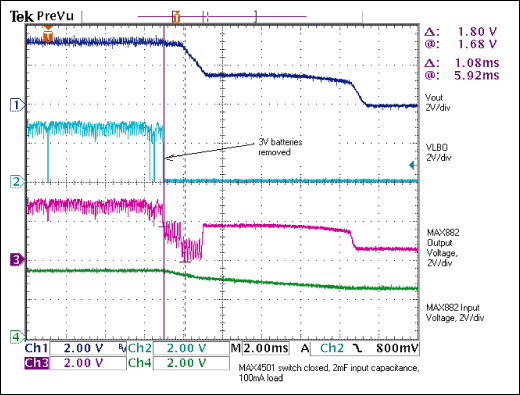
Figure 7. Figure 1 circuit with 2mF reserve capacitor, 100mA load, and switch wired closed: after removing the battery, power remains for 1.08ms.